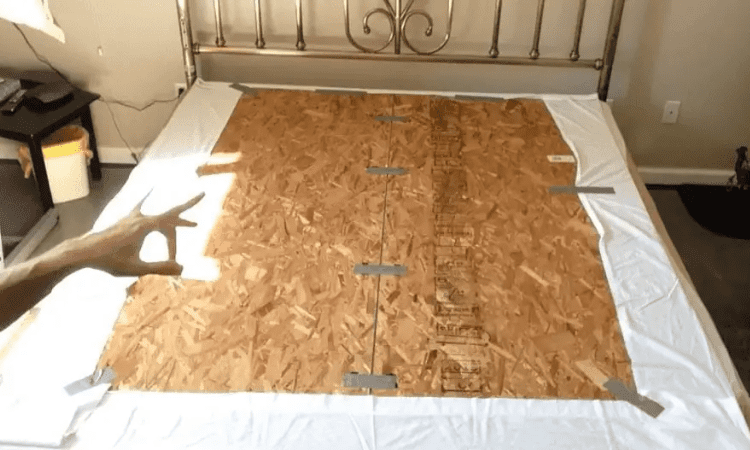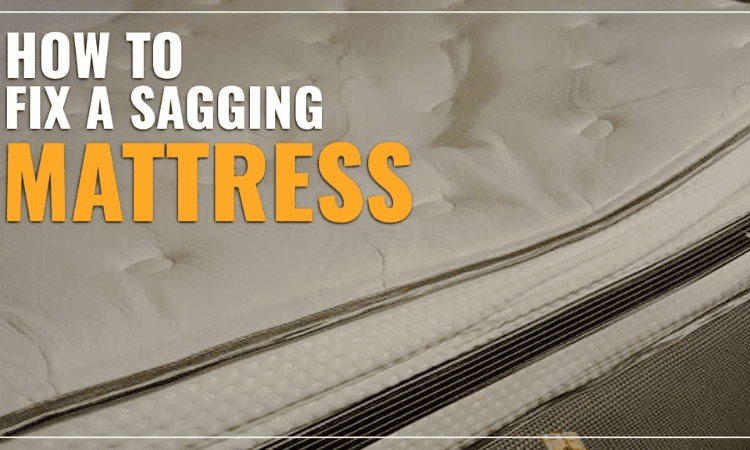It might be uncomfortable and possibly cause back discomfort if your mattress is sagging. You might be asking how to fix a mattress that is sagging. Using plywood is one choice. A sagging mattress can be supported by plywood because it is a sturdy and long-lasting material.
What is a Sagging Mattress?
A mattress that has lost its support and shape is said to be sagging. This can occur gradually over time as a result of wear and tear or more quickly if the mattress is not properly maintained. Sleeping on a mattress that is sagging can be uncomfortable and possibly cause back discomfort.
Benefits of Fixing a Sagging Mattress with Plywood
When fixing a sagging mattress, plywood has a number of benefits. A sagging mattress can be supported by plywood because it is a sturdy and long-lasting material. Additionally, it is accessible and reasonably priced. In addition, plywood may be trimmed to fit any mattress size.
How to Use Plywood to Fix a Sagging Mattress?
You’ll need the following supplies to use plywood to mend a sagging mattress:
Tools needed: plywood (plywood thickness will depend on the weight of the mattress), measuring tape, pencil, saw, screwdriver, and level.
Step 1: Preparing Support Plywood
The plywood must first be prepared for support of the mattress.
1. Select plywood that is the proper size and thickness. The plywood needs to be at least three inches thick and as wide as the mattress.
2. Size-cut the plywood. Cut the plywood to the mattress’s specifications using a saw.
3. Sand the plywood’s edges. This will lessen the likelihood of the plywood splintering.

Step 2: Measuring and Placing Plywood Under the Mattress
The plywood will next be measured and positioned beneath the mattress.
1. Calculate the mattress’ sinking area’s width and length.
2. Plywood should be cut to the same size as the sagging area.
3. Put the plywood below the part of the mattress that is sagging.
4. Check the level of the plywood with a level.
Step 3: Testing & Maintenance
Test the mattress after installing the plywood to be sure it is offering sufficient support. You might need to add an additional piece of plywood if the mattress is still drooping.
Additionally, you should periodically test and inspect the plywood’s longevity. You must replace the plywood if it begins to warp or droop.
Conclusion
The comfort of your mattress can be increased quite easily and cheaply by using plywood to fix a sagging mattress. You may quickly fix your sagging mattress and obtain a good night’s sleep by following the above-described techniques.
Frequently Asked Questions
1. What kind of plywood should I use to repair a sagging mattress?
High-density hardwood plywood is the best kind of plywood to use for repairing a sagging mattress. The optimum support for your mattress will be provided by this kind of plywood because it is robust and long-lasting.
2. What thickness of plywood is ideal?
The weight of the mattress will determine the plywood’s thickness. Plywood that is 3 inches thick may support a mattress that weighs less than 500 pounds. Plywood that is at least 4 inches thick will be required for a mattress that weighs more than 500 pounds.
3. How long is the plywood expected to last?
If the plywood is properly maintained, it will last for many years. The plywood should be inspected frequently for signs of deterioration and replaced if it begins to droop or distort.
4. What are the other ways to fix a sagging mattress?
In addition to changing the mattress, adding a mattress topper, or using a mattress base, there are various solutions to cure a sagging mattress. However, using plywood to support a sagging mattress is the least expensive and most efficient solution.

